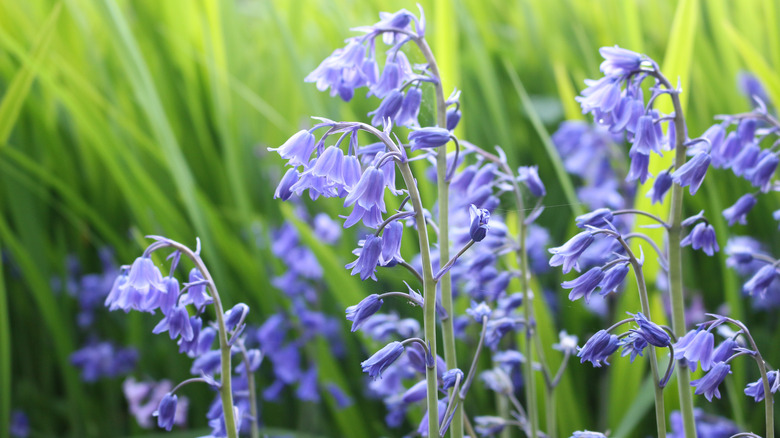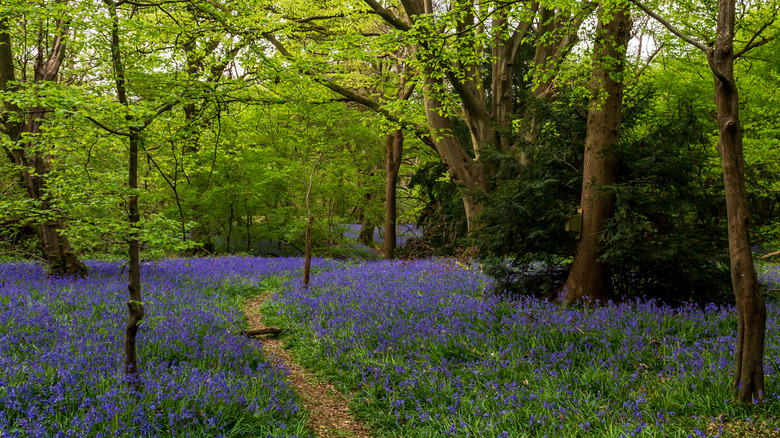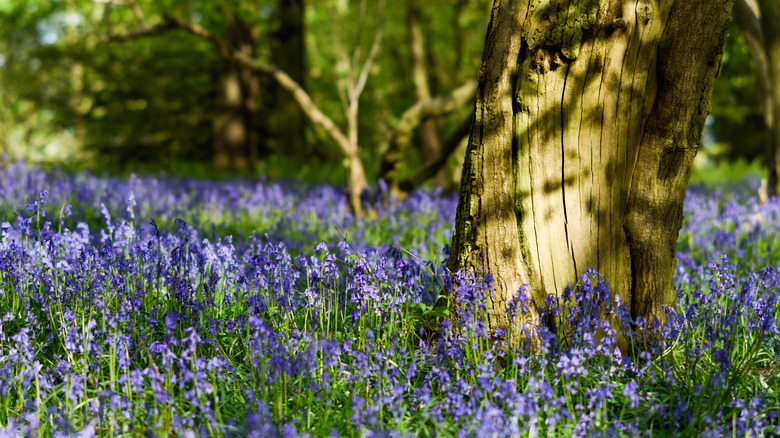Where To Plant Bluebell Flowers In Your Garden So They Thrive
Bluebell flowers are known for their fairy-like charm and beautiful blue color, and they can add a touch of grace and a sweet smell to your yard. This perennial herb starts as a bulb underground, emerging to produce a sea of drooping flowers from late March to the beginning of early summer in May. Each stem can produce up to 20 flowers, demonstrating their dramatic and elegant beauty. While these flowers are often seen in a deep violet color, they are also found in shades of white and pink.
Bluebells are a great addition to any yard and are easy to grow. They are considered a woodland plant, meaning they have adjusted to a shady life. The bluebell flower grows best in an area of partial shade to full shade. When grown beneath deciduous trees in their native woodland areas, they benefit from the natural dappled shade the forest provides. Bluebells thrive in shady areas but will also tolerate partial sun, making them a great, versatile flower to add to your garden.
Do bluebell flowers spread?
Bluebells propagate through bulb division and seed dispersal, so they spread easily. Because of this, they also make an excellent ground cover, particularly in spring and summer. There are two types of bluebell flowers: the English bluebell and the Spanish bluebell. The English bluebell is the native, less aggressive, and most common type. The Spanish variety, on the other hand, you probably won't want to plant in your garden. Its invasive and vigorous growth pattern can take over spaces where it's planted. It has the potential to, and typically does, outcompete the native English species. This aggressive habit poses an issue because, once established, it dominates areas, threatening native flora and diminishing biodiversity.
For this reason, it's best to focus on native bluebell species in your area rather than non-natives. Because bluebells spread, you may have to separate them to prevent overcrowding. You can do this in late summer by dividing already established plants. Use a shovel to dig up the clumps you want to separate. Shake off the soil, divide the sections, and replant, leaving 4 to 6 inches between each.
Do bluebells prefer sun or shade?
Bluebells have an affinity for shaded environments. Because they are woodland plants, they thrive in partial to full shade. This preference is rooted in their natural habitat, under the cover of tree canopies and protected from direct sunlight. They also thrive in cool spring temperatures, which is why dappled sunlight is ideal. Like in their natural habitat, the trees filter the sun, regulating temperature and moisture levels, keeping the understory of vegetation cool along the forest floor.
When choosing a spot to plant and care for your bluebells, sow them under deciduous trees or shrubs to provide them with partial or full shade. Additionally, choose a spot with moist and well-draining soil, rich with organic matter, where they can easily access nutrients. You can add manure, leaf litter, or compost to help with this and mimic their natural environment. Adding organic matter helps enrich the soil by providing nutrients that support its growth and lush spring flowering. A cool, shady spot underneath shrubs or trees is the perfect place to help bluebells thrive in your garden.


